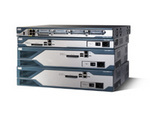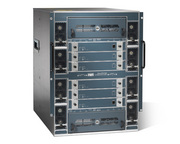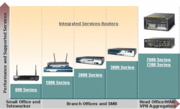Custom 2
Custom Page
Written By: Khairul Azrin B. Azman
For this page is written to assist anybody who is taking the CCNA ( Cisco Certified Network Associate ) or the CCNP ( Cisco Certified Network Professional ) exams or it can be as a reference or a study guide. CCNA and CCNP are the two most pupular networking certification available nowadays. There are many CISCO networking academy available in Malaysia , and INPENS International Collge is one of them. There a several CISCO labs at INPENS , plus some switches and routers such as CISCO and 3COM.
Introduction
For First timer , this is the list of things that you must understand thoroughly and deeply. There are many technical skills required to set up a router or a switch. Notes about them can be obtained at CISCO website http://www.cisco.com , go to the search , and just type in the things that you wanna find. There are also software that can be download to assist in learning CCNA or CCNP such as Cisco Config Maker , Cisco Works 2000 , Cisco IOS software and much , much more. | |
| Cisco 1600 Fast Step | |
| Designing ATM Internetworks | |
| Fiber Distributed Data Interface (FDDI). | |
| Internetworking Design Basics | |
| Product Overview-fddi | |
| EIGRP | |
| VLANS | |
| VLSM | |
| VTP | |
| Spanning Tree Protocol | |
| Frame Relay | |
| ISDN | |
| DHCP | |
| DDR | |
| BGP |
CCNA.( Cisco Certified Network Associate)
CCNA Competencies.
| CCNA Networking Basics | CCNA2 Routers and Routing Basics | CCNA3 Switching basics and intermediate routing | CCNA4 WAN Technologies |
|
|
|
|
|
|
|
|
|
|
|
|
|
|
|
|
|
|
|
|
Cisco Networking Academy Program
CCNA 1 and 2.
Lab Companion
Chapter 1 : Introduction to Networking.
- PC Hardware.
- PC Network TCP/IP Configuration
- Using Ping and Tracert from a workstation
- Web Browser Basics
- Basic PC and Network Troubleshooting
- Decimal to Binary Conversion
- Binary to Decimal Conversion
- Hexadecimal Conversion.
Chapter 2: Networking Fundamentals
- OSI Model and TCP/IP Model
- OSI Model Characteristics and Devices
Chapter 3: Networking Media
1. Safe handling and use of a multimeter
2. Voltage measurement
3. Resistance measurement
4. Series Circuits
5. Fluke 620 Basic Cable Testing
6. Staright-Through Cable Construction
7. Rollover cable construction
8. UTP Cable purchase
9. Communications circuits
10. Fiber-Optic Cable purchase
Chapter 4: Cable testing and cabling LANs and WANs
1. Fluke 620 Cable tester wire map
2. Fluke 620 Cable tester Faults
3. Fluke 620 Cable tester lengths
4. Fluke Link Runner LAN test
5. Fluke Link Runner Cable and NIC test
6. Connecting Router LAN interface
7. Jack punch down
8. Hub and NIC purchase
9. LAN switches purchase
10. Building a peer-to-peer network
11. Building a hub-based network
12. Building a switch based network
13. Building a basic routed WAN
14. Establishing a console connection to a router or switch
15. Troubleshooting interconnected devices
Chapter 5: Ethernet Fundamentals
Chapter 6: Ethernet technologies and Ethernet switching
1. Waveform decoding
2. Introduction to the Fluke Network Inspector
3. Introduction to the Fluke Protocol Inspector
Chapter 7: TCP/IP Protocol Suite and IP Addressing
1. IP Addressing basics
2. DHCP client setup
3. Workstation ARP
Chapter 8: Routing Fundamentals and subnets
1. Small router purchase
2. Basic subnetting
3. Subnetting a class A network
4. subnetting a class B network
5. subnetting a class C network
Chapter 9: TCP/IP transport and application layer
1. Protocol Inspector , TCP and HTTP.
Part II: CCNA2: Routers and routing basics.
Chapter 10: WANs and Routers
1. Connecting a Console Interfaces
2. Connecting a Router LAN interfaces
3. Connecting WAN interfaces
Chapter 11: Router fundamentals
1. Router configuration using setup
2. Establishing a console session with HyperTerminal
3. Command Line fundamentals
Chapter 12: Router Configuration
1. Command modes and router identification
2. Configuring router passwords
3. Using router show commands
4. Configuring a serial interface
5. Configuring an Ethernet interface
6. Making configuration changes
7. Configuring interface description
8. Configuring message of the day
9. Configuring host tables
10. Password recovery procedures
Chapter 13: Learning about neighboring and remote devices
1. Creating a network map using Cisco discovery protocol
2. Using CDP Commands
3. Establishing and verifying a Telnet connection
4. Suspending and disconnecting Telnet session
5. Advanced Telnet operations
6. Connectivity Tests Ping
7. Connectivity Tests Traceroute
8. Troubleshooting IP Address Isssues
Chapter 14: Managing Cisco IOS Software
1. Using the Boot System Command
2. Troubleshooting Config Register Boot problems
3. Managing configuration files with TFTP
4. Copying , editing and pasting configurations
5. Managing IOS Images with TFTP
6. Managing IOS Images with ROMmon and Xmodem
Chapter 15: Routing and routing protocols
1. Configuring Static routes
Chapter 16: Distance Vector Routing Protocols
1. Configuring RIP
2. Troubleshooting RIP
3. Preventing routing updates through an interface
4. Load balancing across multiple paths
5. Configuring interior gateway routing protocol
6. Default routing with RIP and IGRP
7. Unequal Cost Load Balancing with IGRP
Chapter 17: TCP/IP Error and Control Messages.
Chapter 18: Basic router troubleshooting
1. Troubleshooting using ping and telnet
2. Using show ip route to examine routing tables
3. Troubleshooting routing issues with show ip route and show ip protocols
4. Gateway of last resort (Default Gateway)
5. Last Route Update
6. Troubleshooting Routing Issues with Debug
7. Troubleshooting using Trace Route.
Chapter 19:Intermediate TCP
1. Multiple Active Host Sessions
2. Well-known port numbers and multiple sessions
Chapter 20 : Access Control Lists
1. Configuring Standard Access Control Lists
2. Configuring Named ACLs
3. Configuring Extended ACLs
4. Standard ACLs
5. Simple Extended Access Lists
6. vty Restriction
7. Simple DMZ Extended Access Lists
8. Multiple Access List Functions (Challenge Lab)
Appendix A: Structured Cabling
1. Examination of termination types
2. Terminating a Category 5e Cable on a Category 5e Patch Panel
3. Tool usage and safety
4. Identification of cables
5. Category 5e Outlet Termination
6. Terminating Category 5e to a 110 Block
7. Category 6 Jack Termination.
Appendix C: Erasing and Reloading the Router.

BUILDING A CISCO NETWORK FOR WINDOWS 2000.
HARDWARE.
CISCO SWITCHES:-
Catalyst 6500 Series
- support for MSFC ( Multilayer switch feature card ) - provide Layer 3 route
switching
- InterVLAN routing
Catalyst 5000 Series
- Catalyst 5505
- RSM (Route Switch Module) - runs Cisco IOS software and connects dirtectly
into the Catalyst 5000 switch backplane.
Support routing up to 256 VLANs.
- InterVLAN routing
- front panel:-
1. PCMCIA slots. (Personal Computer Memory Card International Association).
2. Reset button.
3. Auxillary port.
4. Console port
5. Status , CPU Halt , Enabled , PCMCIA slot LEDs.
6. Transmit and receive LEDs for each channel.
Catalyst 3500 Series XL
- Gigastack capabilities (GBIC - Gigastack Gigabit Interface Converter)
- Catalyst 3524 XL switch
Catalyst 2900 Series XL
- Catalyst 2924 switch
CISCO ROUTERS:-
7500 Series
- Cisco extended bus - CyBus.
- RSP Card (Route Switch Processor) - Main system processor.
- Cisco 7507 router.
7200 Series.
- OIR (Online Insertion and Removal) , dual hot swappable load sharing power
supplies.
- Cisco 7204VXR router.
3600 Series.
- WAN interface cards - ISDN Basic Rate Interface (BRI) , serial , T1 and E1.
1700 Series.
- Cisco 1700 series router.
1600 Series.
- 1601 R,1602 R, 1603 R , 1604 R and 1605 R (R- Run from RAM)
- security measures - ACL - Access Control List , PAP (Password Authentication Protocol) , TACACS+ (Terminal access
controller access control system plus , RADIUS (Remote authentication dial -in user service, CHAP (Challenge handshake authentication protocol).
- 1 Ethernet ports.
800 Series.
Model 802 IDSL - 1 Ethernet ports , 1 IDSL(ISDN Digital Subscriber Line) with integrated NT1 (U Interface) ports
- Support line rates up to 144 Kbps.
CISCO Protocol:-
ISL - Inter Switch Link
Dynamic Routing Protocol - BGP.
- is designed to take the information supplied by one of the interior protocols
- and share it with a completely separate , or autonomous , networking
system.
Interior Protocol:-
Routing Information Protocol(RIP)- Xerox Network Systems.
Interior Gateway Routing Protocol - IGRP - Cisco
Open Shortest Path First (OSPF) - IETF for IP networks.
Intermediate System-to Intermediate System (IS-IS) - IETF for OSI and IP
networks.
RIPv2 - IETF for IP networks.
Enhanced IGRP -Cisco - supports IP, IPX and AppleTalk networks.
LAN/WAN technologies:-
1. Ethernet
2. Token Ring.
3. HDLC (High - Level Data Link Control).
3. Frame Relay. - packet-switched WAN protocol.
4. PPP - Point to point protocol.
Cisco IOS.
Internetwork Operating System.
- configuration of interfaces.
- security using ACLs
- switch IOS can support configuration of VLANs ,VTP and item unique to switches.
- router IOS provide configuration support for various WAN configuration.
Router Feature Sets.
1. Enterprise
2. IP/IPX/IBM routing support to the router.
3. IP Plus - adds items related to the Internet Protocol.
- Network Address Translation (NAT)
- Hot Standby Router Protocol (HSRP)
- Voice over IP (VoIP)
- ATM LAN Emulation (LANE)
4. Firewall feature set.
5. Memory requirements.
-ex: 3620 router - enterprise feature need minimum 16MB flash memory and
64MB dynamic random access memory(DRAM).
6. Command Line Interface (CLI) - provided by the Cisco IOS software.
- command executive , EXEC.- provide the user interface and interprets the
command you typed
OSI Protocol Reference Model.
Software Products:-
Cisco ConfigMaker. -free - runs on Win95/98/NT/2000 - network designer can use
when designing an internetwork.
Cisco FastStep. - use on Win95/98/NT/2000 for configuration of Cisco series 700,
800,1600 routers and dialup 2500 series access servers.Called FastStep.
Cisco Works 2000 - application for network management.
Open System Interconnection (OSI) protocol reference model .
| Layer 7 Application |
| Layer 6 - Presentation |
| Layer 5 Session |
| Layer 4 Transport |
| Layer 3 Network |
| Layer 2 Data Link |
| Layer 1 Physical. |
Implementing The Cisco Routers.
Border routers.
Access routers.
Broadcast storm. - when the broadcast traffic on a network becomes too much
for the bandwith to handle and thus causes normal traffic to begin suffer.
Protocol traffic. - Windows 2000
- IPX/SPX , from old Novell system.
- SNA/APPN , from IBM mainframe environtments.
- AppleTalk , from Macintosh machines.
- NetBEUI , from old Windows and some UNIX systems.
Dynamic routing protocols available on Cisco routers:-
1. RIP and RIP2
2. OSPF
3. IGRP.
4. EIGRP.
Determining the transport method.
Frame relay. - is used when there are multiple sites over the WAN that are linked
into a central site.
- benefits is several sites can be linked in on the same circuit using logical
- mappings known as permanent virtual circuits (PVCs).
ATM - Asynchronous Transfer Mode is a high speed broadband method of
transport normally handled over fiber optic networks.
- Uses cell technology. (it can attain speeds and bandwidth much higher than
traditional packet based technology).
- Hardware - ASICs (Application Specific Integrated Circuits) - being handled
by processor dependent on software.
HDLC - standard method of serial communications and is the default setting for all
Cisco serial ports.
Wireless - interconnections of buildings.
Point to Point (PPP) - PPP technology is the most expensive of all because it
allows for dedicated bandwidth and secure connections between sites over
serial links.There is no sharing of bandwidth with other virtual circuits , so the
circuit goes only from "one point to another" with no arbitrary rerouting by the
provider.
Layer 3 Switching: RSM (Route Switch Module) and MFSC (Multi Function Switch
Card).
- the RSM is designed to plug into the 5500 series switch.It enables the
switch to handle on board routing between VLANs at switching speeds.
Reducing the number of protocols on the network.
Network addressing and segmentation.
Redundancy and reliability.
- Circuitry failover design.
- Hardware failover design.
Security on the routed architecture
- Cisco use ACLs (Access Control List)
QoS on the LAN/WAN using Windows 2000.
- based on the Active Directory.
- QoS technique called RSVP (Reservation Protocol), tied into the Cisco IOS
at the switch port level.
QoS techniques available on Cisco routers:-
- FIFO (First in First Out).
- WFQ (Weighed Fair Queuing).
- CBWFQ (Class Based Weighted Fair Queuing)
- Priority Queuing.
- Custom Queuing.
- IP Prioritization - Voice on the LAN.
Implementing The Cisco Switches.
Catalyst 1900/2820 Series.
Hardware features of the 1900 Series.
- uses 1-Gbps switching bus to connect up to 24 10BaseT RJ-45 ports together
with two 100BaseT ports(either FX or TX).
- these product feature one attachment unit interface (AUI) Ethernet port in the
back.
- can be used for Thinnet, Thicknet , Ethernet or fiber optic connections.
- the 19XX series can store up to 1024 MAC addresses in the Cisco Access
Manager (CAM) table.
Hardware features of the 2820 series.
- the 2820 expansion slots can support the following modules:-
- dual attachment station (DAS) fiber distributed data interface (FDDI) Fiber
module comes with two ports that uses a ST Fiber- Optic Connector.
- Single attachment station (SAS) FDDI Fiber module has one port that uses
ST Fiber Optic Connector.
- SAS FDDI User Datagram Protocol (UDP) module support one port with an
RJ-45 connector.
- 100BaseTX modules come with either one switched or eight shared
100Base TX ports.
- 100BaseFX modules have either one switched or four shared 100Base
FX ports.
- ATM 155 UDP module supports one ATM interface using the RJ-45
standard.
Software features of the 1900/2820 Series.
- Cisco Visual Switch Manager.
- VLAN support.
- Network port.
- CGMP (Cisco Group Multicast Protocol)
- Spanning Tree Protocol.
- Three switching modes.
- Fast EtherChannel and Gigabit EtherChannel.
- Remote monitoring (RMON)
- Increased VLAN support.
- Uplink Fast.
- TACACS+ (Terminal Access Controller Access Control Sytem Plus).
- CLI.
Catalyst 2900XL/3500XL.
- GBICs
- 3 types of GBIC modules available for GBIC slots.
1. 1000BaseSX (short wavelength) uses the multimode fiber optic link for data
transmission - up to 550 metres.
2. 1000BaseLX/LH - single mode fiber optic link transmitt up to 10 km.
3. 1000BaseZX - up to 100km with high quality cable.
- Switch clustering - combining Catalyst stacks under one IP address and central
control.
- up to 16 switches can be connected under one cluster and managed under
one IP address.
- Gigastack.
Hardware features of the 2900XL Series.
- 4MB shared buffer for all ports and a 3.2 Gbps switching bus.
- 100BaseTX ports are autosensing (10/100) and (half/full duplex) for
10BaseT NICs or Cat.3 wiring.
Hardware features of the 3500XL Series.
- 10 Gbps switching fabric
- 4MB shared memory buffer for all the ports.
- all the ports capable of full duplex operation.
Software features of the 2900XL/3500XL Series.
- HSRP (Hot Stanby Router Protocol)
- Virtual Terminal Port (VTP) .
- SPAN port mirroring
- RMON support for the CLI and SNMP operation.
Cisco Set-Based Switching Products.
Catalyst 4000
- Layer 2 switching.
- 4003 Catalyst offers 3 slots ( two with Supervisor Engine model I ) for a small ,
high density bandwidth solution.
- 4912G fixed configuration 12-GBIC port switch.
-Layer 3 connectivity. (switching).
-4006 Catalyst switch has 6 slots( 5 with Supervisor Engines)
-4908G has 8 GBIC ports.
.
Router Cisco Rear panel WAN serial and Ethernet ports 1 DHD.




